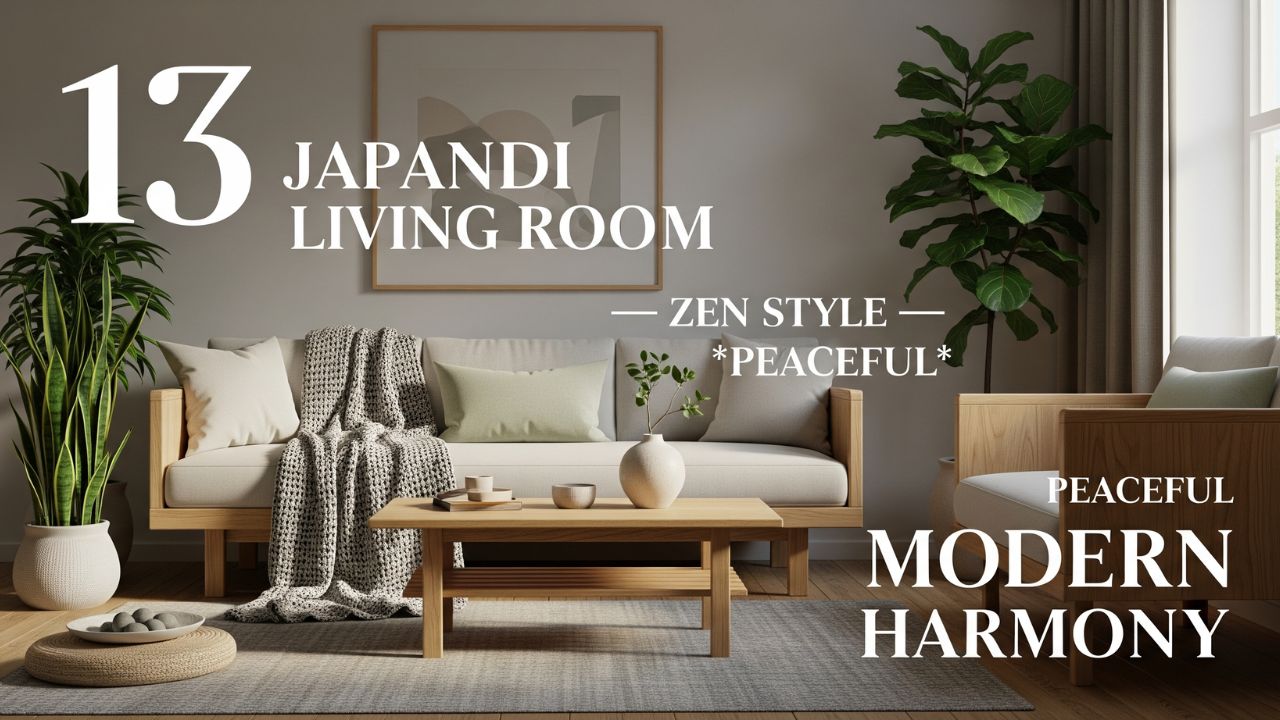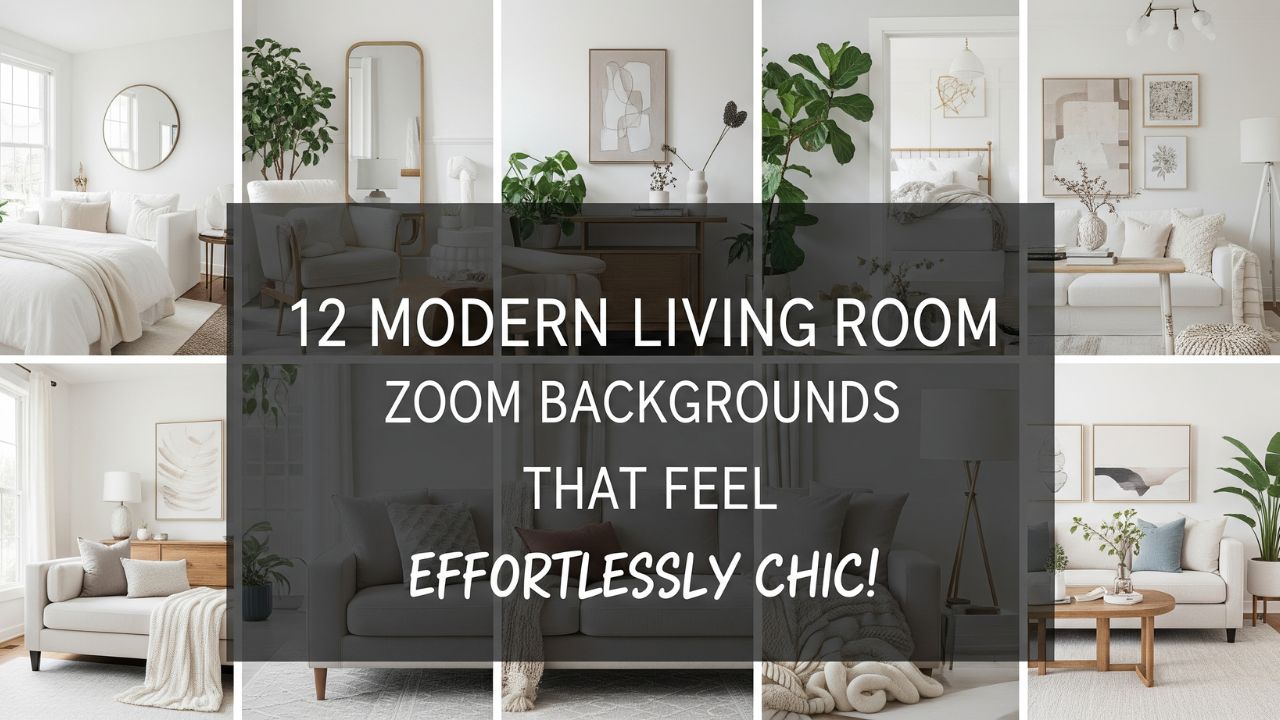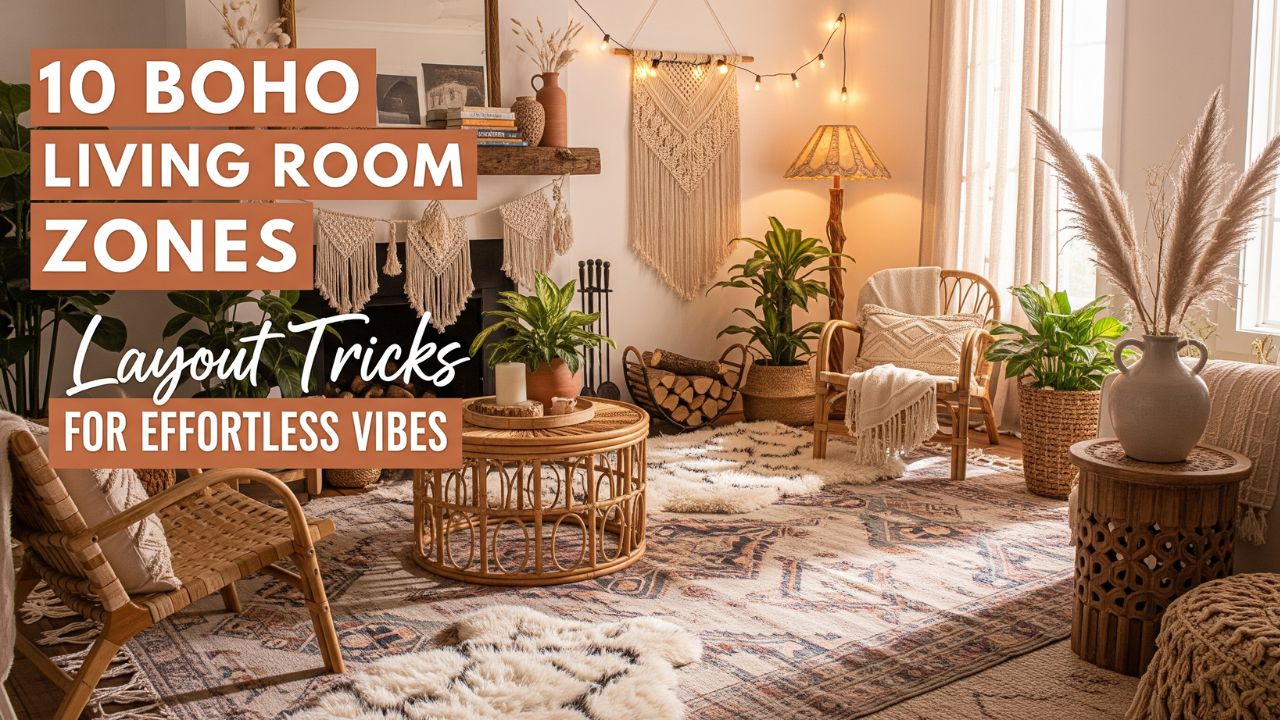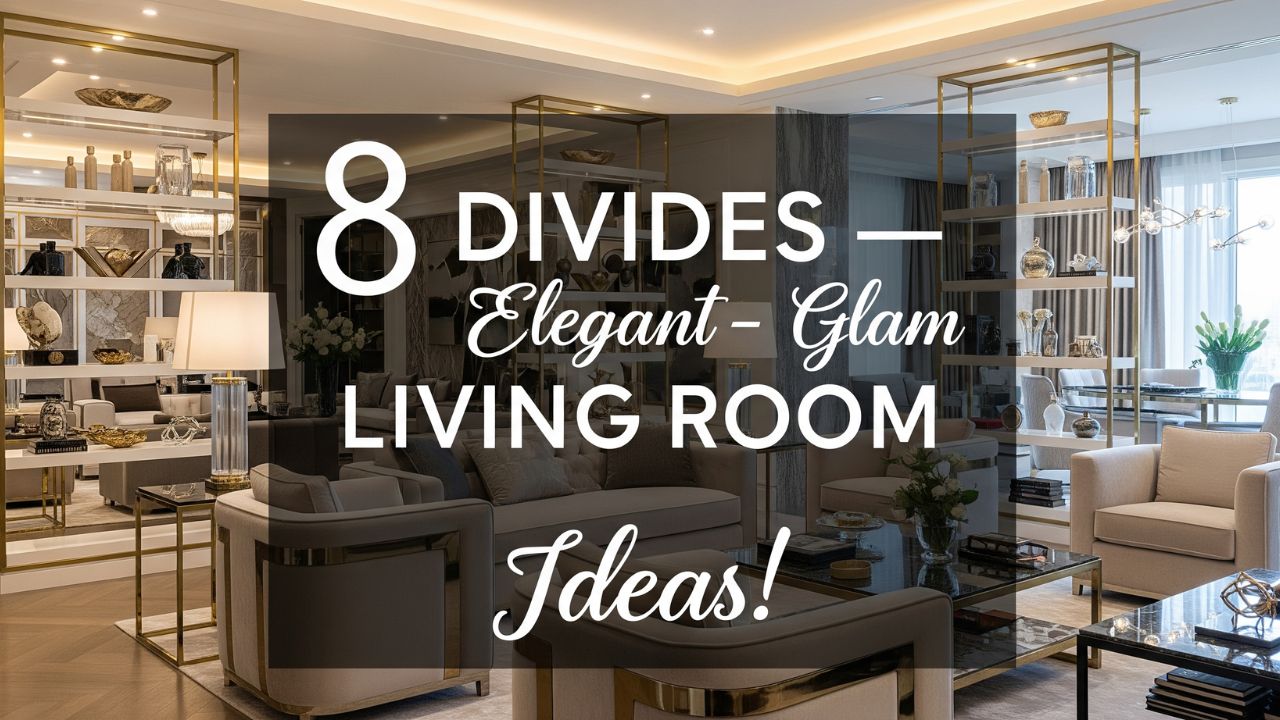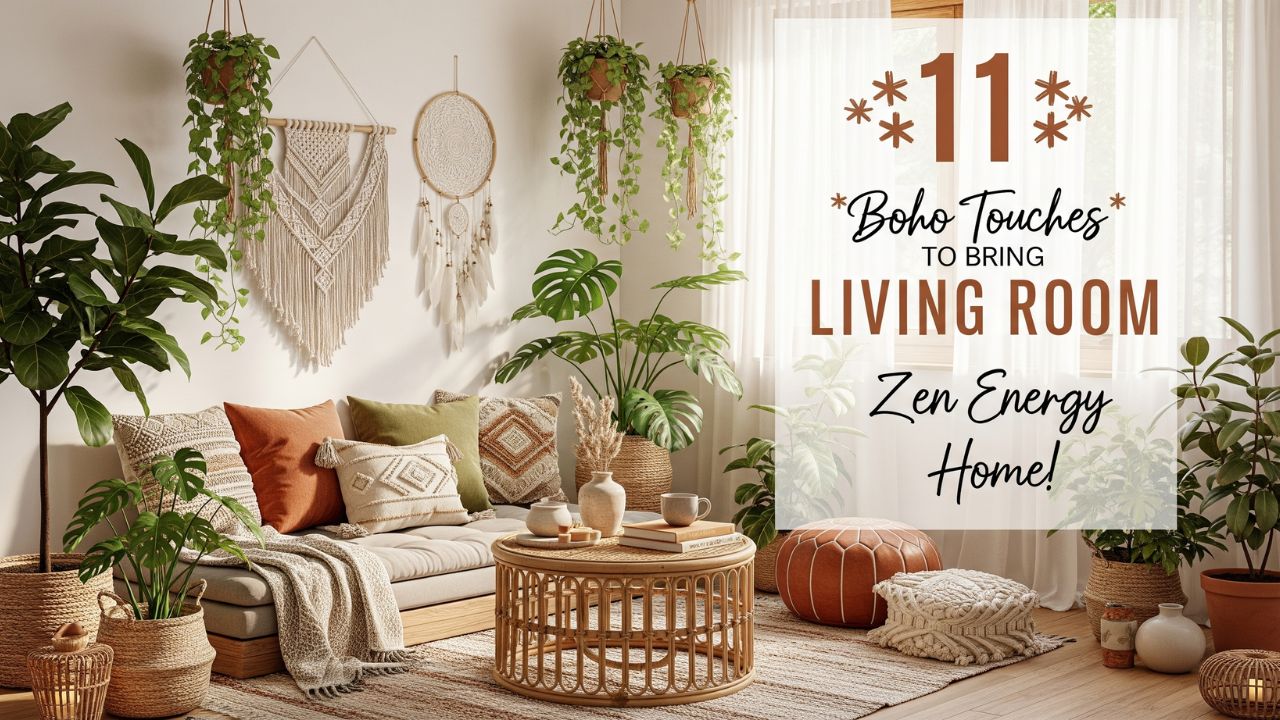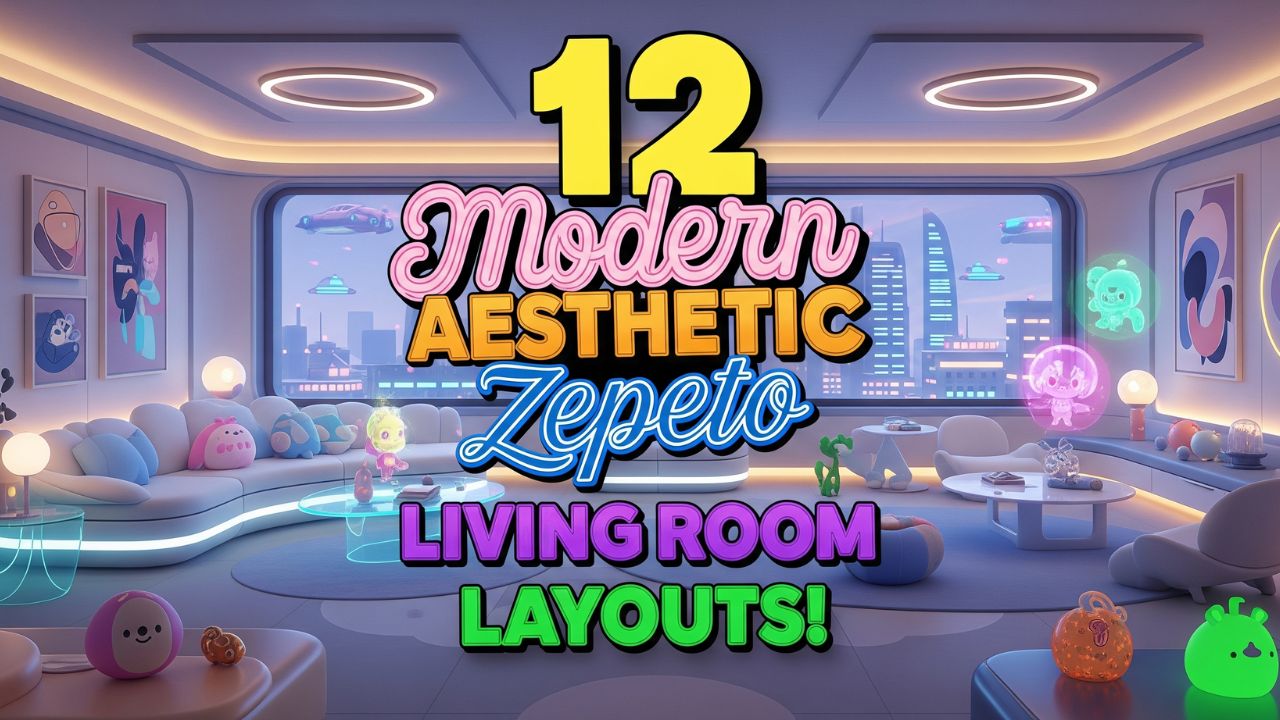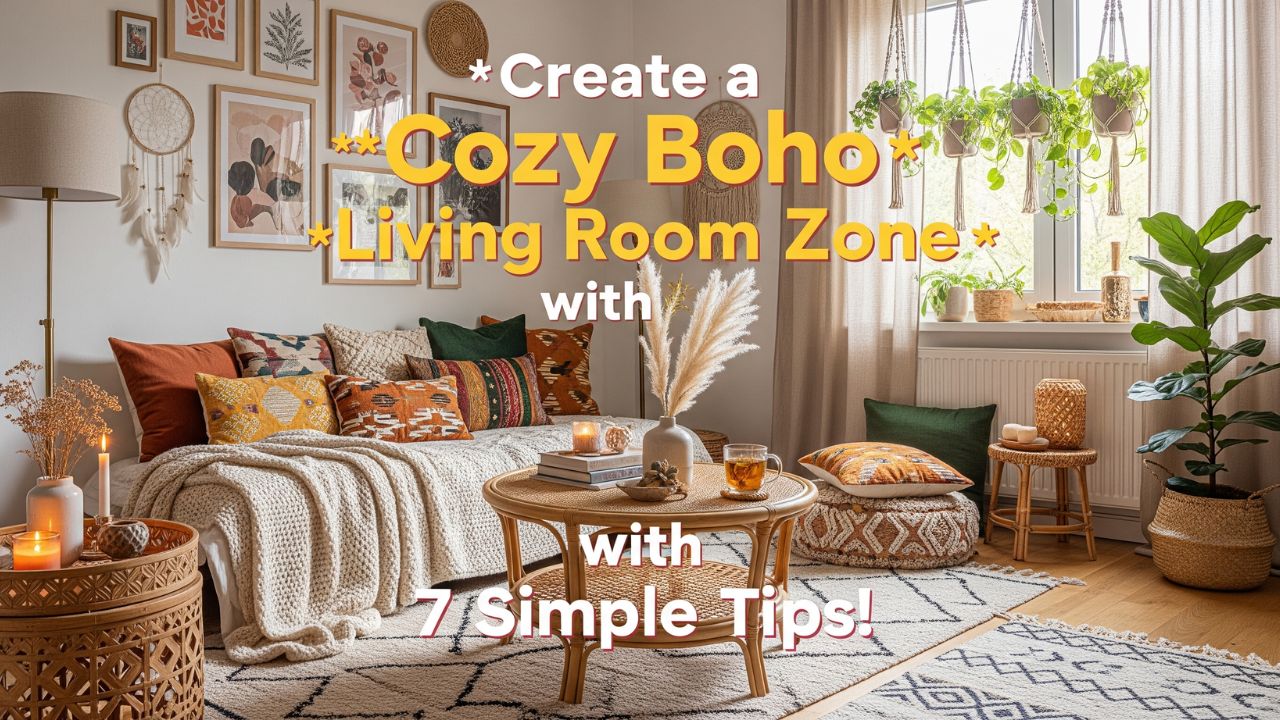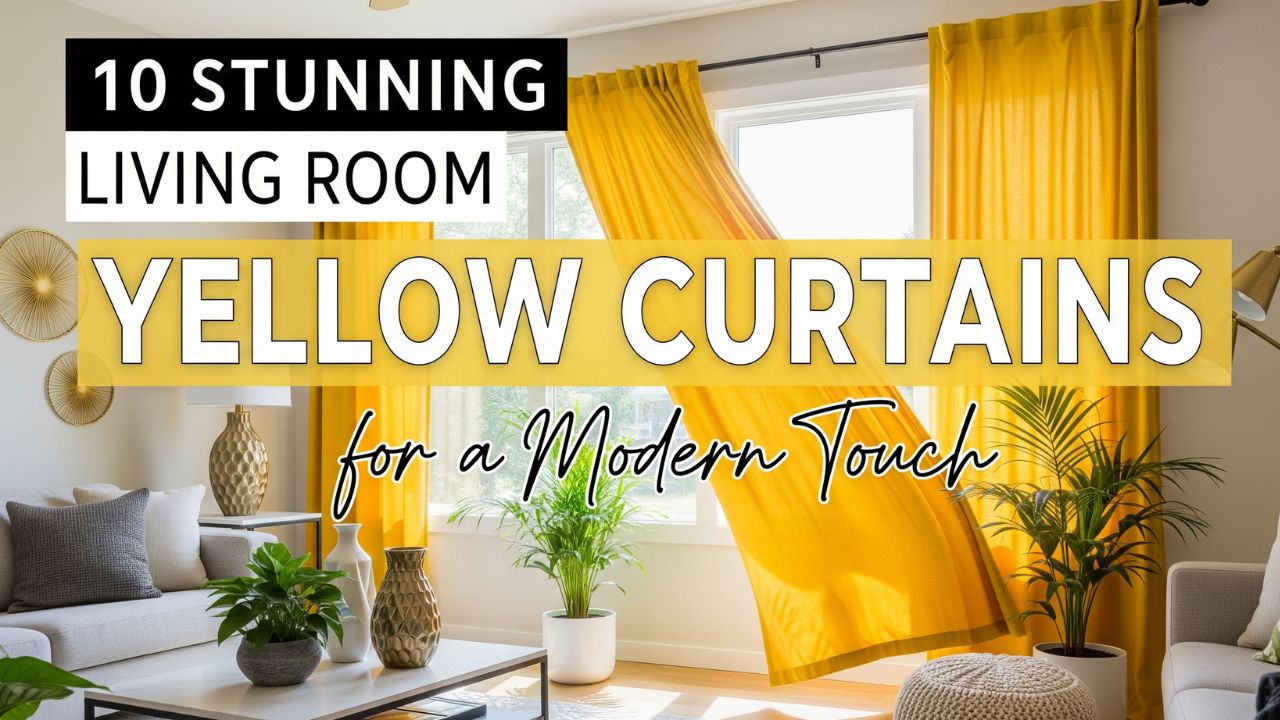There’s something magical about mid-century design — the timeless blend of simplicity, function, and soul. And when it meets a bold yellow sofa, your living room instantly becomes a statement of personality and warmth.
Do you know that yellow was one of the most iconic hues in mid-century interiors? Designers of the 1950s and 60s believed that yellow symbolized optimism and creativity — a color that brightens moods and conversations alike. Pairing this sunny tone with mid-century modern elements creates a living space that feels both nostalgic and refreshingly modern.
If you’re looking to breathe life into your home, this guide will walk you through 9 stunning mid-century living room ideas featuring a yellow sofa — from organic textures and wood accents to geometric art and minimalist lighting. Let’s turn your space into a golden masterpiece.
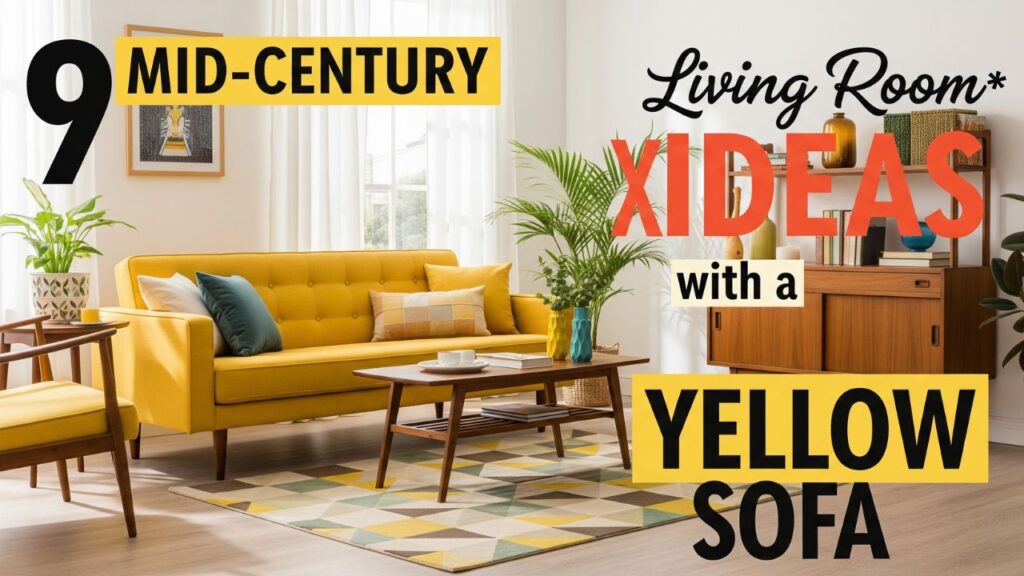
Table of Contents
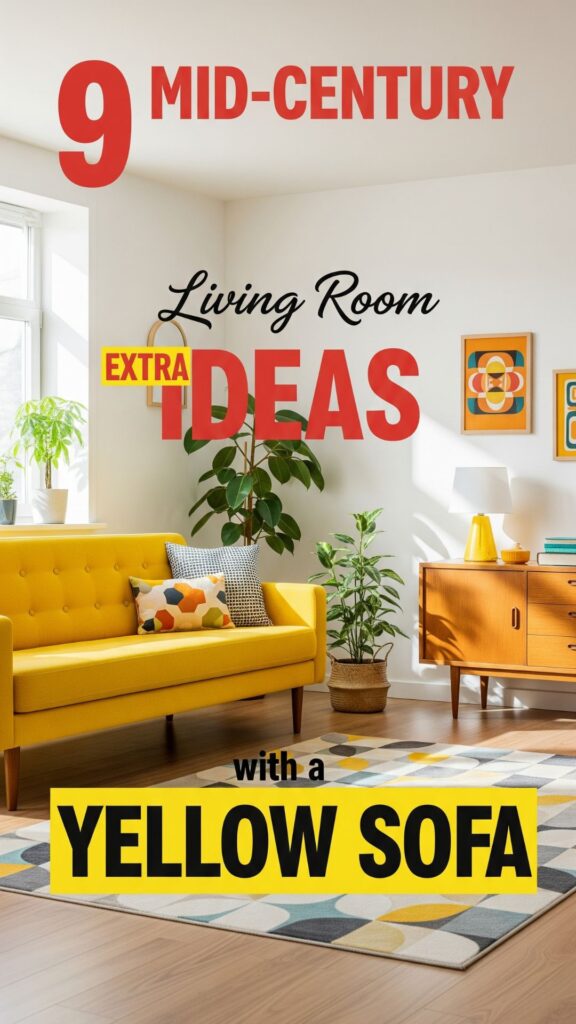
9 Mid-Century Living Room Ideas with a Yellow Sofa
1. Pair with Warm Wood Tones
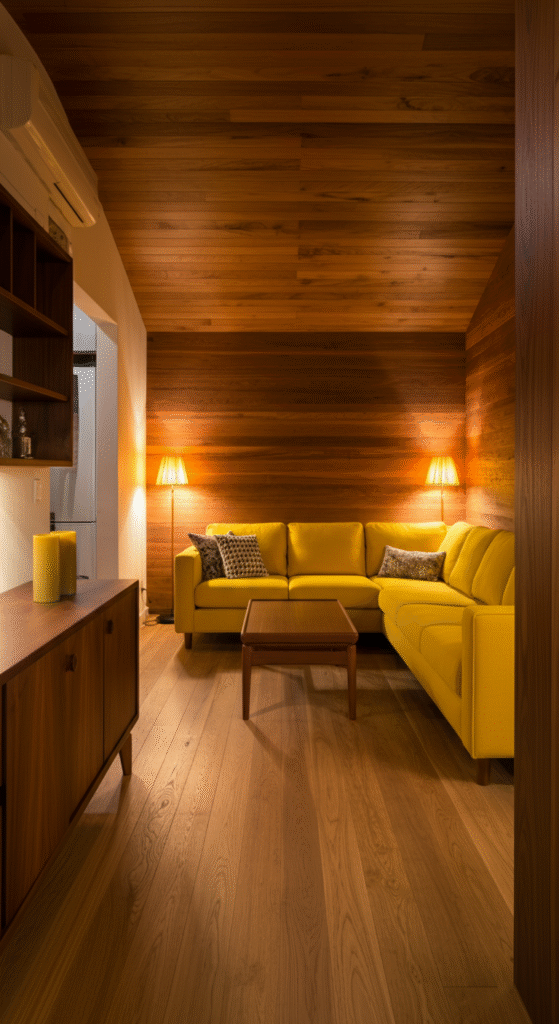
Nothing says mid-century modern quite like rich wood textures. A yellow sofa paired with walnut or teak furniture instantly evokes the classic warmth of mid-century interiors.
The contrast between golden upholstery and deep brown tones creates a perfect visual balance — cozy yet elegant. Try placing your sofa near a walnut credenza or adding a teak coffee table for that nostalgic retro charm.
Interesting fact: Original mid-century designers like George Nakashima and Arne Jacobsen often used natural woods not only for structure but also to highlight craftsmanship — a detail modern replicas sometimes overlook.
2. Add Geometric Patterns for Depth
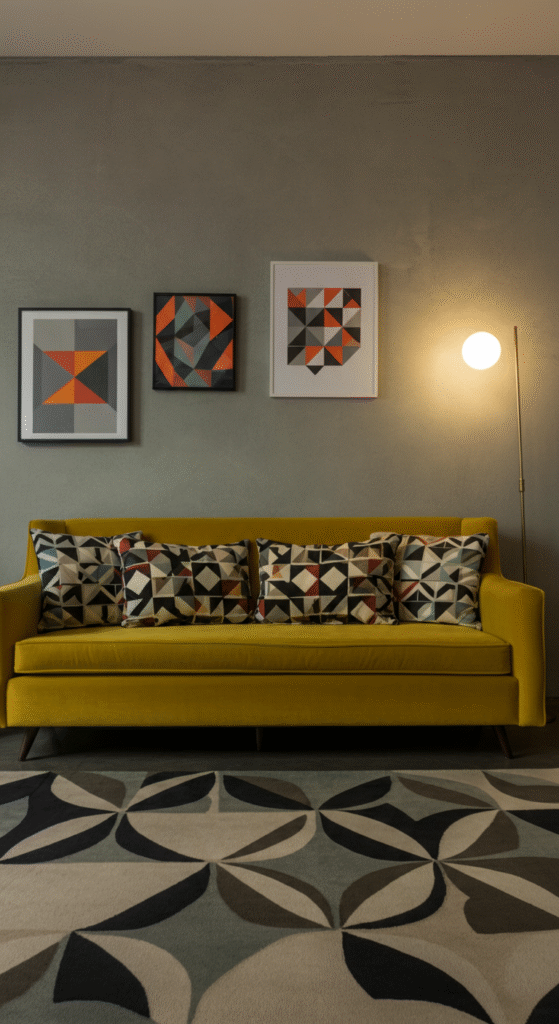
Mid-century design thrives on clean lines and bold geometry. Incorporate geometric throw pillows, a patterned area rug, or diamond-shaped wall art to bring a sense of movement around your yellow sofa.
Keep your color palette simple — think white, mustard, olive green, and black — to maintain a cohesive mid-century look. Geometric shapes don’t just add visual rhythm; they also create a sense of order and sophistication.
Did you know? Many geometric prints from the 1950s were inspired by Bauhaus art principles, emphasizing function through form and pattern. What started as an artistic movement became a timeless interior style.
3. Layer with Muted Neutrals
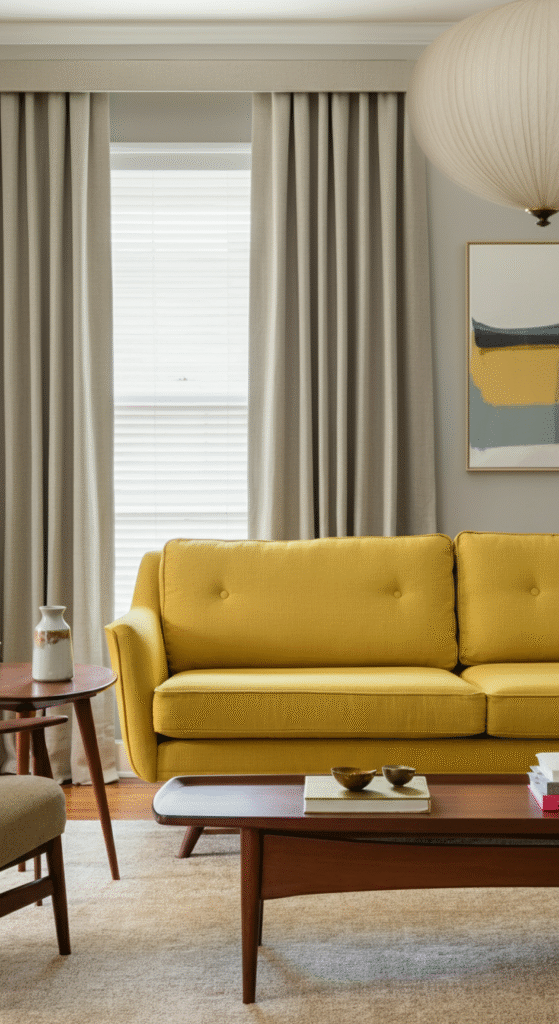
If you’re worried that a yellow sofa might overpower your living room, anchor it with soft neutral shades. Cream walls, beige rugs, or taupe curtains will help the sofa shine as a focal point without overwhelming the space.
This approach lets the yellow act as a visual “pop” while the rest of your décor whispers in soft tones. Choose matte finishes and organic fabrics like linen or cotton to keep the look authentic to the mid-century vibe.
Myth to bust: Many assume mid-century interiors are only about bright colors. In reality, the original style often balanced bold hues with earthy neutrals for harmony and calm.
4. Embrace Vintage Lighting Fixtures
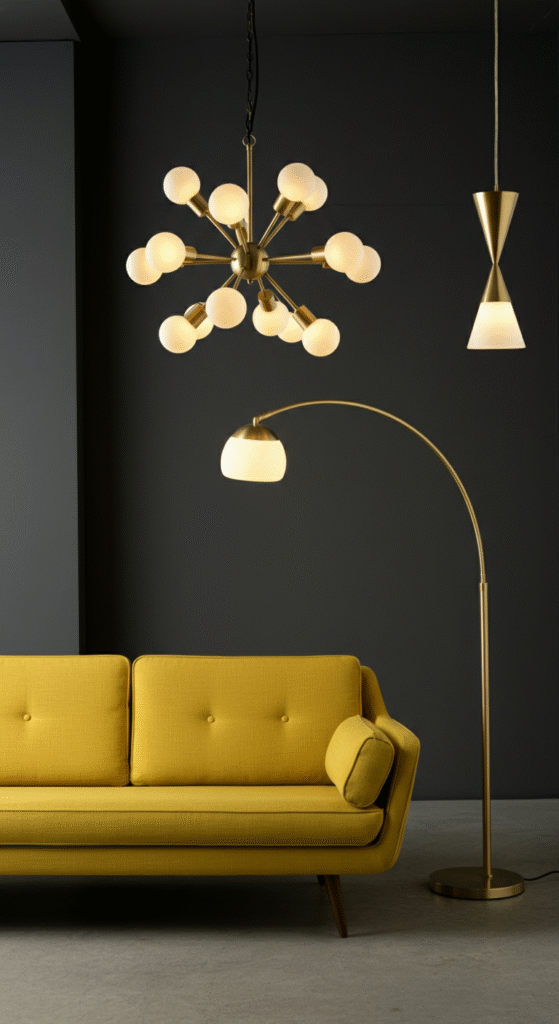
Lighting can make or break your mid-century aesthetic. Opt for Sputnik chandeliers, arc floor lamps, or cone-shaped pendant lights to illuminate your yellow sofa beautifully.
These sculptural pieces double as conversation starters while enhancing the warm glow of your living room. Brass, black metal, and frosted glass are the materials that define this era’s signature lighting style.
Do you know? The Sputnik chandelier, inspired by the 1957 Soviet satellite, became a global design icon and is still one of the most sought-after mid-century lighting pieces today.
5. Mix Textures: Velvet Meets Wood and Metal
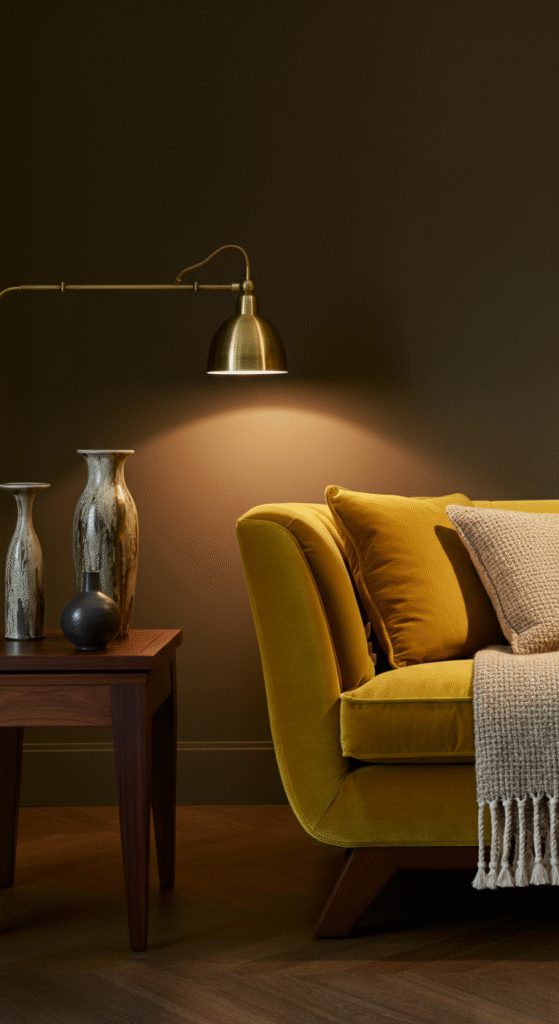
A true mid-century space isn’t just about visuals — it’s about how it feels. Combine your yellow velvet sofa with a wood console and metal accent décor for tactile richness.
The contrast of soft and hard materials creates a balanced, layered atmosphere. Add a brass floor lamp, ceramic vases, and woven throws to make the space feel inviting and collected over time.
Texture is your secret tool to prevent flatness in design. A room with only sleek or glossy finishes can look sterile — but throw in a nubby fabric or a vintage rug, and it instantly gains warmth and depth.
6. Incorporate Mid-Century Art and Wall Décor
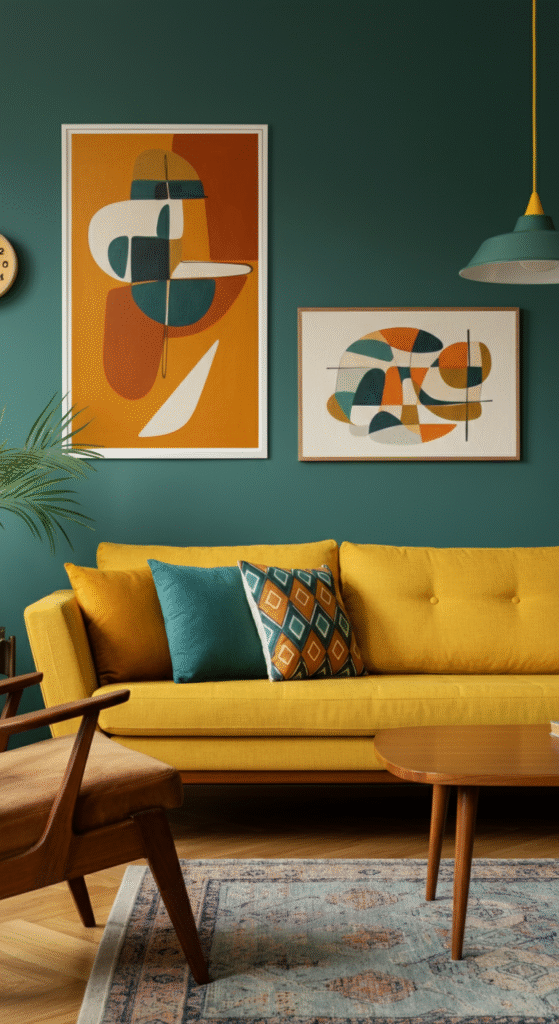
Art was a central part of mid-century homes — not just as decoration but as an expression of individuality. Hang abstract art prints, vintage posters, or modernist paintings above your yellow sofa.
The key is in choosing art with bold shapes, expressive lines, and retro colors like burnt orange, teal, and mustard. You can even go for a gallery wall that mixes framed prints with sculptural wall hangings.
Interesting fact: Abstract expressionism heavily influenced mid-century interiors — homeowners wanted art that matched the forward-thinking optimism of the era.
7. Bring in Greenery for Natural Contrast
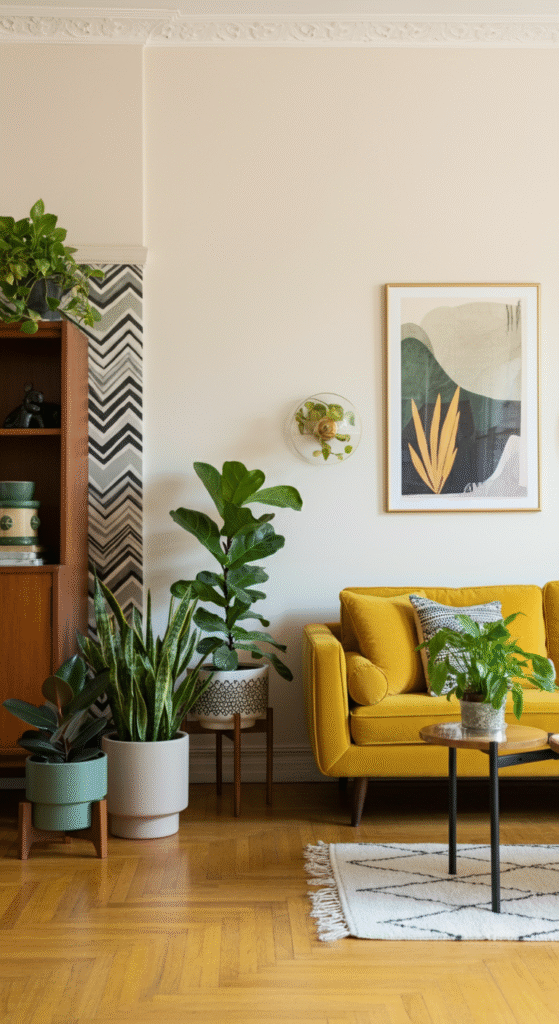
No mid-century living room is complete without the organic touch of plants. The rich green tones of foliage pair beautifully with the brightness of a yellow sofa, adding freshness and visual serenity.
Choose mid-century-friendly plants like fiddle leaf figs, snake plants, or rubber trees — all known for their sculptural shapes and easy maintenance. Place them in ceramic or wooden planters with clean lines.
Do you know? Biophilic design — the concept of integrating nature into interior spaces — was popularized during the mid-century era, long before it became a trend again in modern design.
8. Add a Statement Rug Underneath
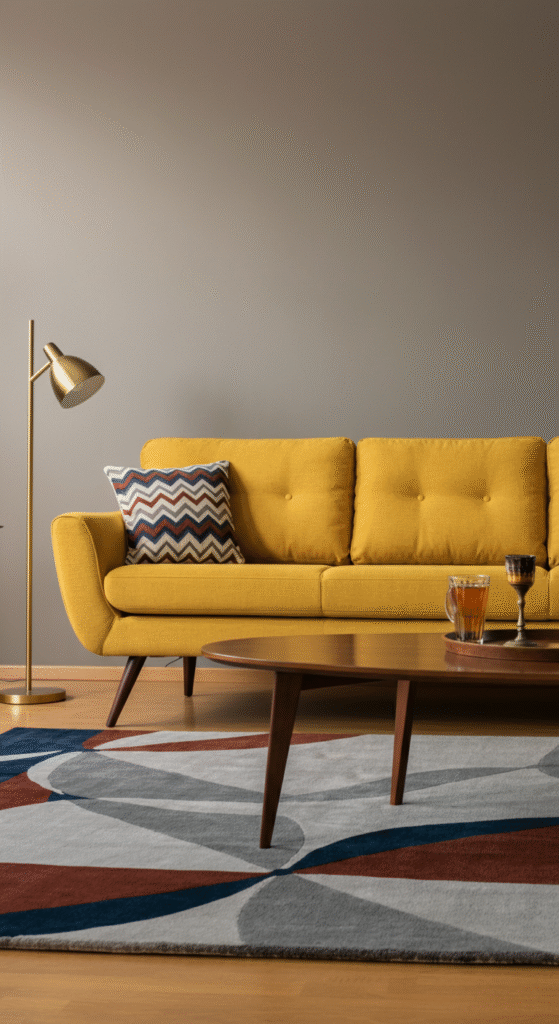
A yellow sofa deserves a worthy stage — and that’s where your rug comes in. Choose a low-pile rug with vintage-inspired patterns, such as atomic motifs, zigzags, or retro florals.
If your sofa leans toward mustard or ochre, pair it with rugs in deep navy, muted rust, or warm gray for visual balance. A rug not only defines the seating area but also anchors your furniture layout in a mid-century manner.
Myth: Some believe rugs are optional in mid-century spaces. In truth, designers often used them to soften angular furniture and create zones in open-concept living rooms.
9. Keep It Minimal Yet Personal
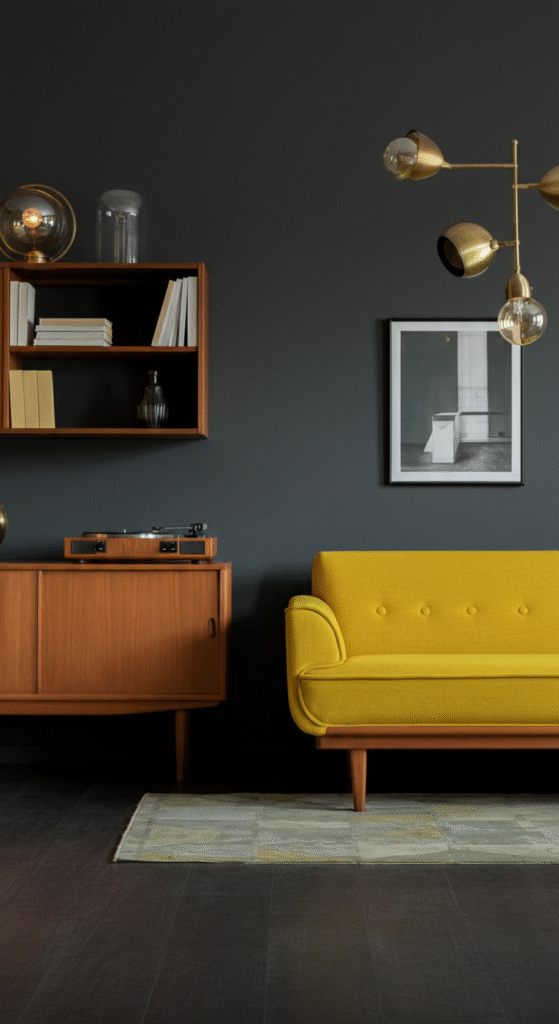
One of the defining features of mid-century modern design is intentional simplicity — every piece should serve a purpose. Avoid clutter and let your yellow sofa be the showstopper.
However, “minimal” doesn’t mean “sterile.” Add personality through curated accessories: a vintage clock, a stack of design books, or a retro turntable on a walnut stand.
Do you know? The mid-century philosophy of “less but better” was heavily inspired by German industrial designer Dieter Rams, whose principles later influenced Apple’s product design.
Bonus Tip: Use Natural Light to Your Advantage
Mid-century spaces thrive on natural illumination. Position your yellow sofa near large windows to capture the sunlight — it will make the yellow glow and instantly energize the room.
Add sheer curtains instead of heavy drapes to let light filter in. The more sunlight reflects on your sofa, the more dynamic and welcoming your living room will feel.
Natural light also enhances the colors of your art, textures, and wood finishes, ensuring that your design feels timeless and alive throughout the day.
Conclusion
A yellow sofa in a mid-century living room isn’t just furniture — it’s an attitude. It symbolizes optimism, creativity, and timeless charm. By pairing it with wood tones, geometric patterns, textured materials, and thoughtful lighting, you create a space that’s both nostalgic and refreshingly modern.
Mid-century design is all about balance — between bold and neutral, minimal and warm, functional and beautiful. When executed with care, your living room will tell a story: one that honors the golden age of design while embracing the spirit of today.
So, whether you’re redesigning your home or simply adding a splash of sunshine to your space, let your yellow sofa be the centerpiece of joy — the place where style and comfort live side by side.
Frequently Asked Questions (FAQs)
What colors go well with a yellow sofa in a mid-century living room?
Warm wood tones, muted neutrals like beige and cream, and deep contrasting colors such as navy or olive green work well with a yellow sofa. Geometric patterns also pair beautifully to create a balanced, stylish look.
How do I style a yellow sofa without making it overpowering?
To avoid overwhelming the space, balance the yellow with soft neutrals in your walls, rugs, and accessories. Adding geometric patterns and vintage lighting also helps maintain visual harmony.
Can a yellow sofa work in a minimalist mid-century room?
Yes! A yellow sofa can serve as the focal point in a minimalist room. Pair it with clean lines, minimal décor, and natural materials like wood and metal to maintain the essence of mid-century modern design.
What type of rug works best with a yellow sofa?
Choose a rug with mid-century patterns like atomic motifs or geometric shapes in muted tones such as rust, navy, or gray. A low-pile rug will complement the clean lines of your yellow sofa without overwhelming the space.
Are plants necessary in mid-century living rooms?
Plants are a great addition to mid-century living rooms, especially with a yellow sofa. They bring a natural touch and contrast beautifully with the bright tones of the sofa. Opt for sculptural plants like fiddle leaf figs or snake plants in clean, modern pots.
